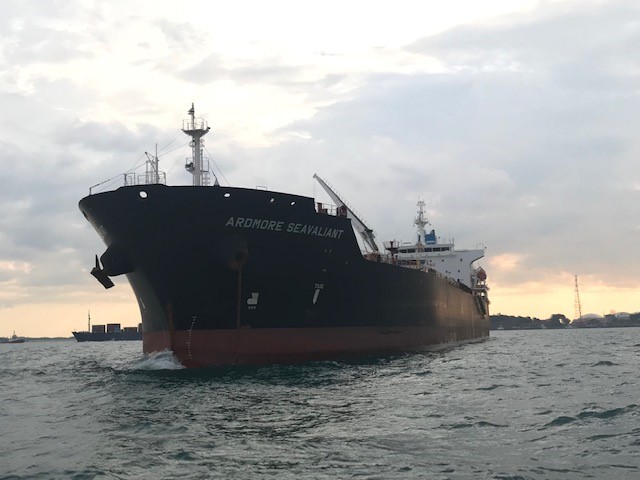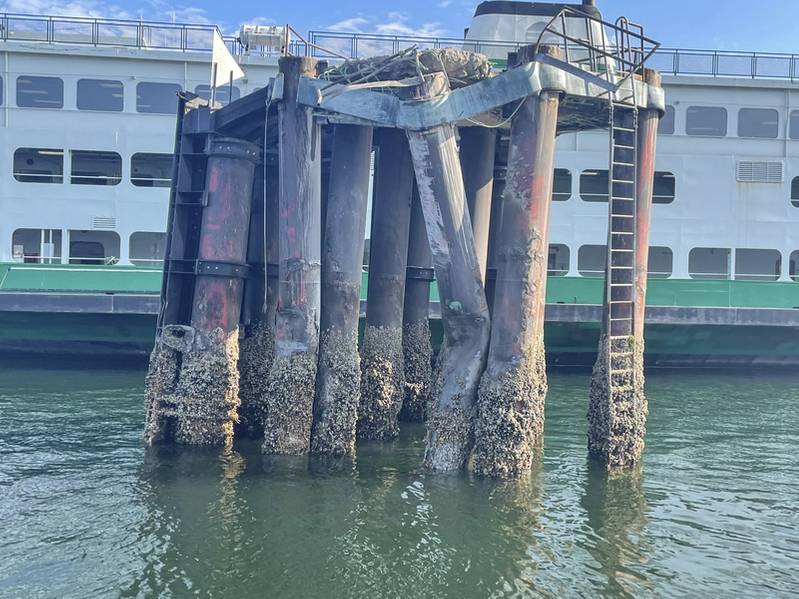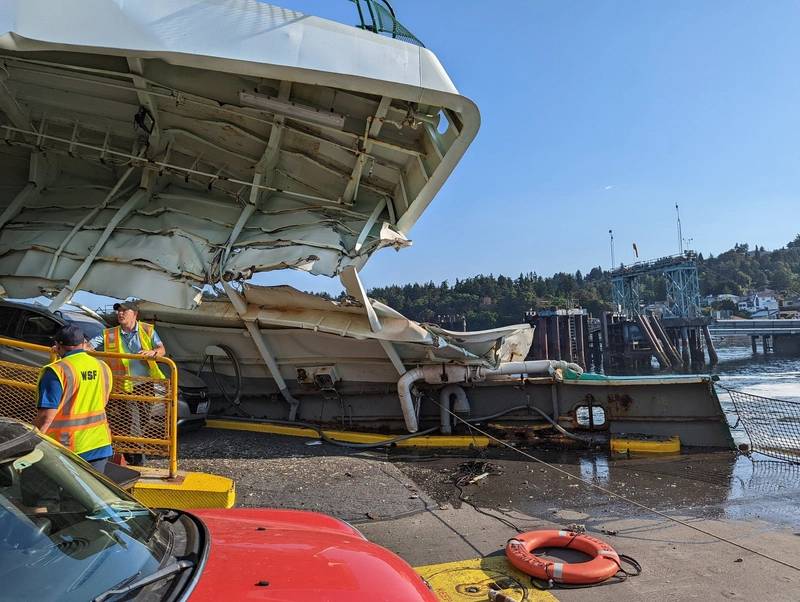Tore Hoem, adventures director at Hurtigruten Svalbard, has lived on Svalbard, the remote Norwegian archipelago just a few hundred miles from the North Pole, for more than two decades, long enough to witness the sea ice retreat significantly and more rain creep into the early and late snow season.
These alarming effects of climate change are among key drivers behind the Hurtigruten Group’s sustainability efforts, including a new hybrid-electric excursion vessel recently put into service in Longyearbyen, Svalbard’s largest inhabited area. The 14.9-meter aluminum vessel, Kvitbjørn, built by Marell Boats in Sweden, runs on a hybrid-electric propulsion system developed by Volvo Penta.
Powered by a Volvo Penta twin D4-320 DPI Aquamatic hybrid solution, the boat has a top speed of 30-32 knots and a cruising speed of 24-25 knots, with a range of 500 nautical miles. Volvo Penta’s “helm to propeller” package for the vessel includes the engines and drivelines, the electronic vessel control (EVC) system, joystick control, dynamic positioning system and the driver interface. The capacity of vessel’s lithium ion batteries is 100 kilowatt-hours (kWh).
Given the current state of technology, electrification is not an option for every vessel. One must consider the use case to determine if a hybrid or full electric setup makes sense. For Kvitbjørn, which will be used for 3-4-hour sightseeing tours, batteries combined with diesel engines fit the bill.
This wasn’t the only option, of course. According to Hoem, Hurtigruten had considered ordering a vessel with other propulsion arrangements such as more traditional outboard engines, but ultimately opted for Volvo Penta’s hybrid-electric solution based on its environmental advantages, as well as the improved passenger experience.
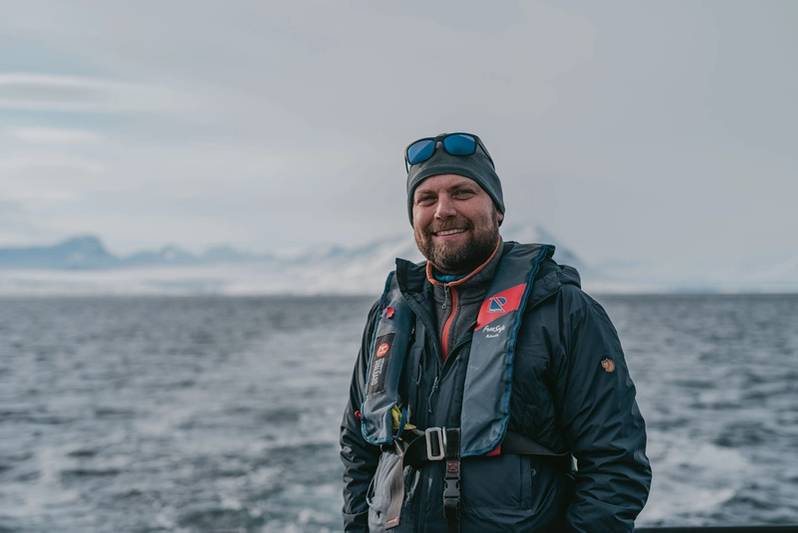 Tore Hoem, Adventures Director at Hurtigruten Svalbard (Photo: Volvo Penta)
Tore Hoem, Adventures Director at Hurtigruten Svalbard (Photo: Volvo Penta)
Kvitbjørn’s tours out of Longyearbyen will provide an opportunity for up to 12 passengers to experience the spectacular Arctic seascapes and landscapes, as well as Svalbard’s true residents: its natural wildlife, which includes polar bears, reindeer, puffins, seals, walrus and whales. The objective isn’t to cruise at 50-plus knots, it’s to give guests the best possible journey, Hoem explained. “The key to that, in many ways, is silence.”
Kvitbjørn can be operated in three modes: full diesel, diesel with electric assist or all-electric, the last of which provides for a quieter ride that is much more pleasant for those on board and less disturbing to the pristine surrounding environment.
“It’s sort of a paradox to take guests out to a glacier front with noisy engines running. That silence is maybe the coolest thing about this [vessel],” Hoem said. “Of course, we go from A to B with some noise and diesel, but when we are at the destination it’s quiet. And that’s the key here, together with the sustainability part.”
And while diesel-electric wasn’t the only option, it certainly wasn’t the easiest either. It took a healthy dose of engineering to pull it off, Jonas Karnerfors, sales project manager at Volvo Penta, explained. Among key challenges were finding a way to fit the large, heavy batteries withing the Marell M15 hull. The team also had to come up with a way to heat the batteries—rather than cool them, as is common in other environments—to ensure they maintain an optimal temperature withing the frigid Arctic waters, Karnerfors said.
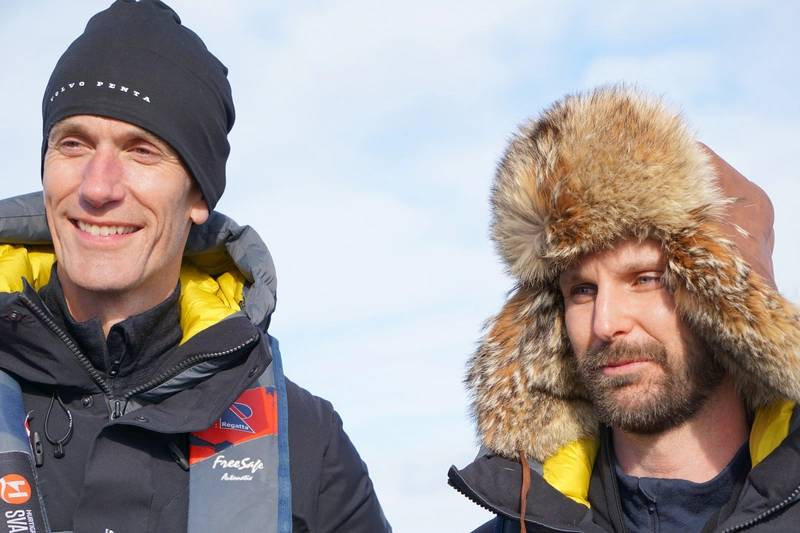 From left: Johan Inden, President of Volvo Penta’s Marine Business Unit, and Jonas Karnerfors, Sales Project Manager at Volvo Penta (Photo: Eric Haun)
From left: Johan Inden, President of Volvo Penta’s Marine Business Unit, and Jonas Karnerfors, Sales Project Manager at Volvo Penta (Photo: Eric Haun)
Kvitbjørn comes amid wider sustainability efforts being led by both the Hurtigruten Group and Volvo Penta in parallel with tourism and marine industry peers striving to reduce their environmental impacts. Increasingly, hybrid and electric propulsion solutions are gaining interest among marine operators working to slash emissions across various sectors.
“Our vision as a company is to be a world leader in sustainable power solutions,” said Johan Inden, president of Volvo Penta’s marine business unit.
Volvo Penta, as part of the Volvo Group, has committed to having a climate neutral impact by 2050. The company aims to offer a broader range of hybrid and full electric products to the market by 2025, and Inden said Volvo Penta sees 2030 as a “tipping point” for the uptake of green propulsion technologies in the marine industry.
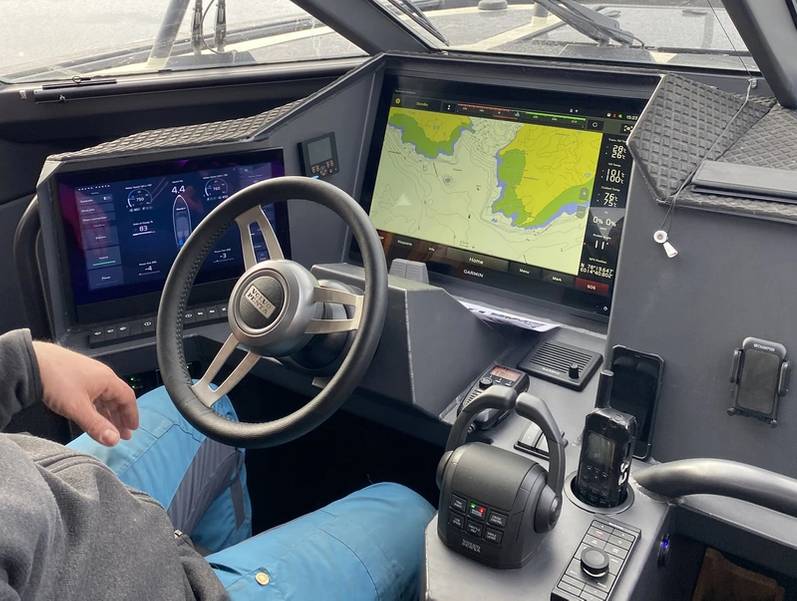 (Photo: Eric Haun)
(Photo: Eric Haun)
According to Inden, Volvo Penta’s “helm-to-propeller” approach better positions the company to achieve its sustainability goals by allowing it to have greater control over maximizing the vessel’s overall efficiency. “The platform that we’ve developed is a combination of software systems, integration between all the parts of the propulsion system with very effective drives and propellers. It gives us a very unique position.”
Inden said that the drive system in particular is often underestimated as a necessary piece of green propulsion solutions. “The more effective you are getting your power in the water, the less of a footprint you’ll have,” he noted.
As Kvitbjørn goes to work, Volvo Penta will analyze fuel savings and emissions reductions enabled by the hybrid-electric solution, Inden said.
In addition, over the course of the next three years, the companies will test the hybrid propulsion technology as well as Volvo Penta’s new “e-mobility-as-a-service” business model, which will see Hurtigruten Svalbard pay by the kilowatt-hour for the vessel’s operation. According to Volvo Penta, this payment model, while still at a concept stage, has been conceived as a way of risk-sharing with the end-user as marine electrification solutions are typically costlier.
Inden said this model could be especially attractive in the commercial marine sector for workboat owners and operators looking to go green. “You don’t have to make a huge investment. You go to the bank, you finance it and then you amortize. You can actually use the vessel and pay for it at the same time as you earn your revenue,” Inden said. “That’s an interesting aspect from a business model and financial perspective, but even more so, it engages us with the customer in a different way, and there is a different responsibility from our side.”
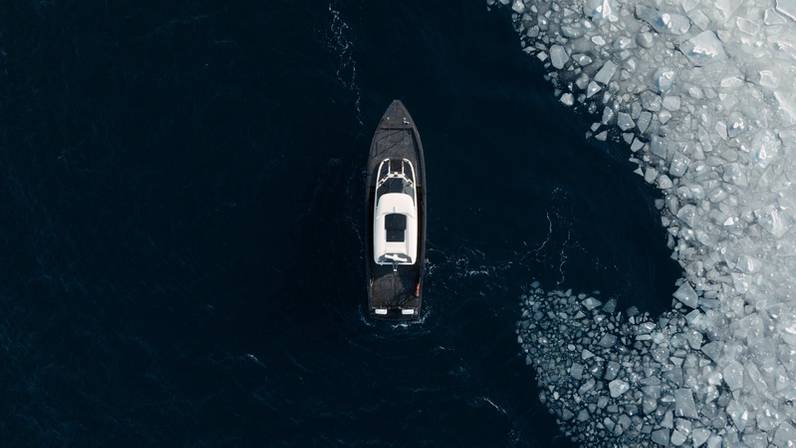 (Photo: Volvo Penta)
(Photo: Volvo Penta)
Throughout the three-year contract period, Volvo Penta will deliver the driveline as a service; it still owns the equipment. The boat is separated from the driveline from a contract perspective, Inden said. In this case, Volvo Penta will monitor the drivetrain and maintain responsibility to ensure it remains operational. “It’s not that we handed over a vessel and then the customer calls us when something is wrong. Now we’re a bigger part of the operation,” Inden said. “As we evolve this over time, hopefully, an operator or captain will feel that we are a closer partner to making sure they’re up and running. That is a real benefit to this.”
But there are still questions to be answered. “In this setup, we are piloting and we are testing,” Inden said. “We want to understand how it will work in real commercial operation—insurance, additional financing, responsibility, data protection, et cetera. That is really what we’re trying to nudge here to get that discussion going. And we don’t know the solution. We don’t know where it will go exactly. But we are sure it’s moving in that direction, so we need to understand it.”
In the event that Hurtigruten Svalbard opts out at the end of the three years, the setup is so that Volvo Penta can exchange the equipment for a regular driveline. “It’s very safe in that perspective,” Inden said. “You always have to think 360 degrees when you do something like this. What are the options for all the involved parties? Can we do this safely? Can we do it with productivity and uptime for the customer? I hope they will be excited to continue, but let’s see.”
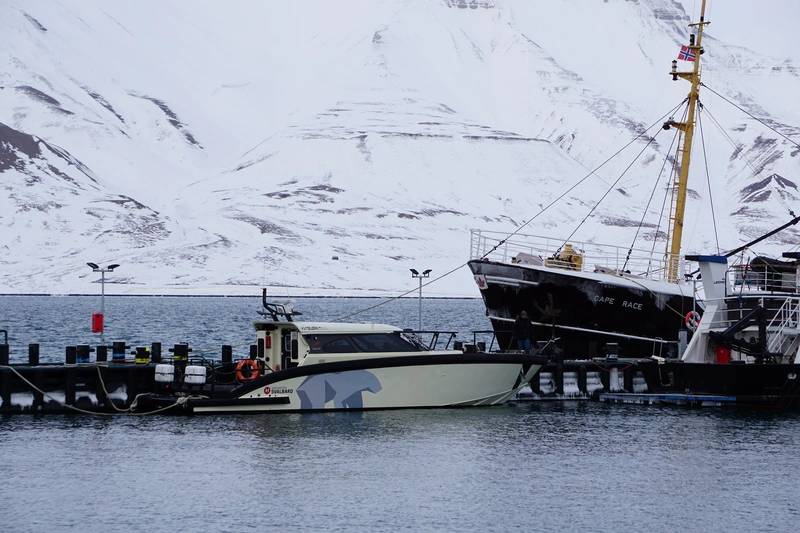 The Volvo Penta DPI package features a hydraulic clutch for silent and smooth shifting at low engine speeds, as well as added maneuverability. With steer-by-wire technology, the joystick functionality is also precise, delivering greater control. Kvitbjørn also has a joystick on the aft deck so a guide can steer the vessel from outside during a tour. (Photo: Eric Haun)
The Volvo Penta DPI package features a hydraulic clutch for silent and smooth shifting at low engine speeds, as well as added maneuverability. With steer-by-wire technology, the joystick functionality is also precise, delivering greater control. Kvitbjørn also has a joystick on the aft deck so a guide can steer the vessel from outside during a tour. (Photo: Eric Haun)
Source: https://www.marinelink.com/news/svalbard-tour-boat-ushers-new-498424

